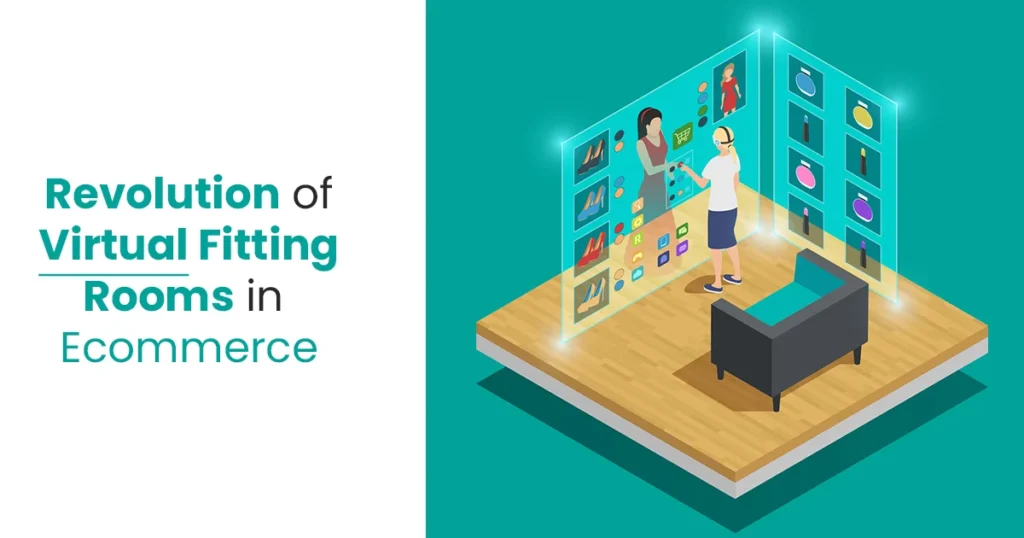![]()

Introduction:
Nowadays, Virtual fitting room are coming out as a technological advancements continue to reshape the way consumers interact with brands and make purchasing decisions online. One such innovation that has garnered significant attention is the advent of virtual fitting room. Virtual fitting room offer consumers the ability to try on clothing and accessories virtually, revolutionizing the traditional online shopping experience.
Understanding Virtual Fitting Rooms Technology :
Virtual fitting room technology utilize augmented reality (AR) and artificial intelligence (AI) technologies to allow users to visualize how clothing items would look and fit on their own bodies. By simply uploading a photo or using a webcam, shoppers can virtually try on various garments, experiment with different sizes, styles, and colors, all from the comfort of their homes.
Enhancing Personalization with Virtual Fitting Rooms:
One of the key benefits of virtual fitting rooms is the level of personalization they offer. Unlike traditional brick-and-mortar stores or static online product images, virtual fitting rooms provide a tailored experience for each shopper. Through advanced algorithms, these platforms analyze body measurements, preferences, and previous purchase history. In order to recommend the most suitable options, ultimately reducing the likelihood of returns and increasing customer satisfaction.
Integrating Sustainability:
Innovative fashion solutions are integrating sustainability into the virtual fitting room experience. Virtual fitting rooms contribute to a more environmentally conscious shopping experience by integrating sustainable fashion trends. This includes providing size recommendations based on accurate 3D body measurements. Which helps in aligning with the growing demand for eco-friendly practices in the fashion industry.
Improving Decision-Making:
For many consumers, one of the biggest challenges of online shopping is the uncertainty regarding fit and appearance. Virtual fitting rooms offer a lifelike representation of garments, enabling users to visualize themselves wearing the product from multiple angles and in various lighting conditions. Furthermore, These tools empower shoppers to make more informed purchasing decisions, boosting conversion rates for e-commerce retailers.
Overcoming Challenges for Virtual Fitting Rooms:
While virtual fitting rooms hold immense potential, they are not without challenges. The accuracy of sizing and fit prediction is a primary concern, as variations in body shapes and measurements can impact the virtual try-on experience. Hence, Ensuring seamless integration with existing e-commerce platforms and optimizing the user interface for mobile devices are critical factors for widespread adoption.
Future Outlook:
Despite these challenges, the future of virtual fitting rooms appears promising. With advancing technology and increasingly sophisticated algorithms, virtual fitting rooms are anticipated to enhance accuracy and intuitiveness. Furthermore, given the rising demand for immersive online shopping, they are positioned to become ubiquitous on e-commerce sites, blurring the boundaries between online and offline retail experiences. Moreover, with the growing demand for immersive online shopping experiences, virtual fitting rooms are poised to become a standard feature across e-commerce websites, further blurring the lines between online and offline retail.
Conclusion:
In conclusion, 3d virtual fitting rooms represent a paradigm shift in the way consumers shop for clothing and accessories online. Virtual fitting rooms, employing AR and AI technologies, offer e-commerce firms a personalized, immersive, and convenient buying experience, fostering customer loyalty and engagement.Hence, Embracing these innovations will be crucial for brands aiming to remain competitive and meet the evolving demands of digital-savvy consumers.